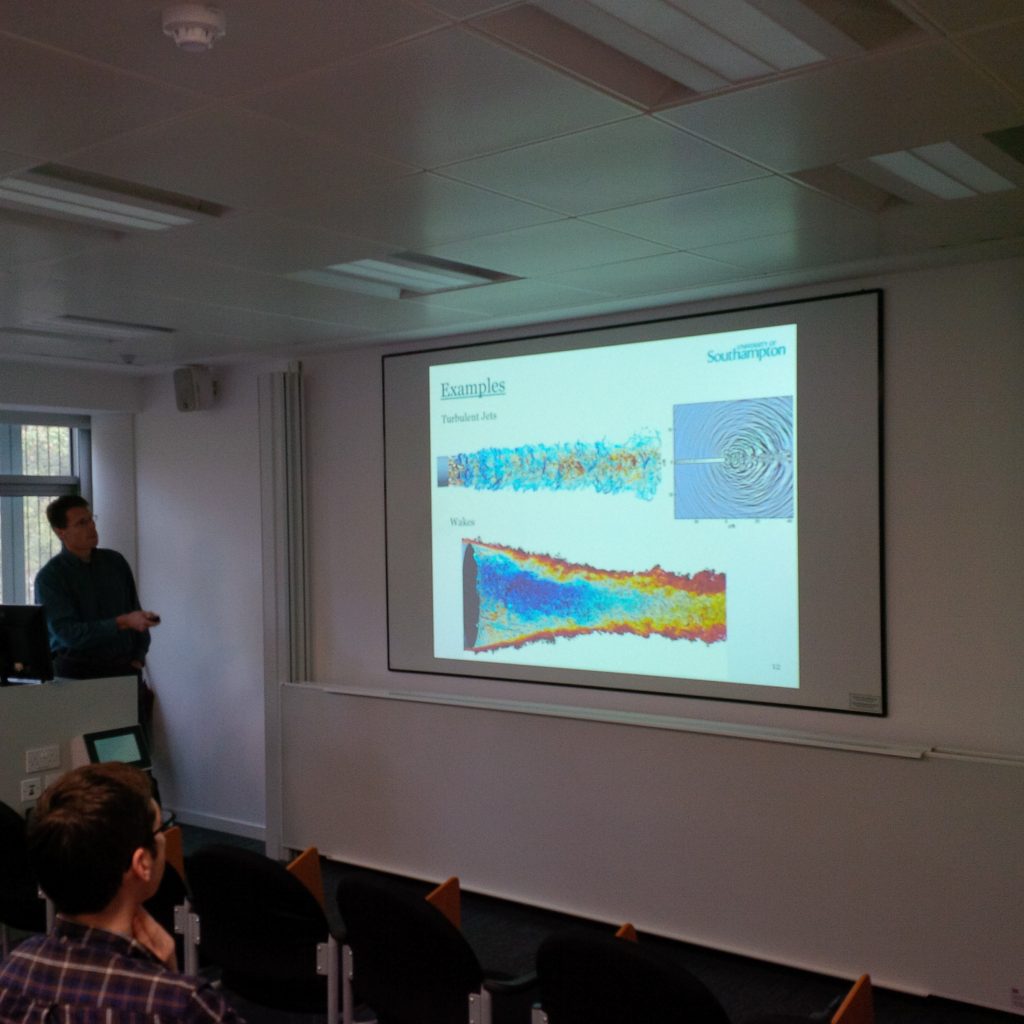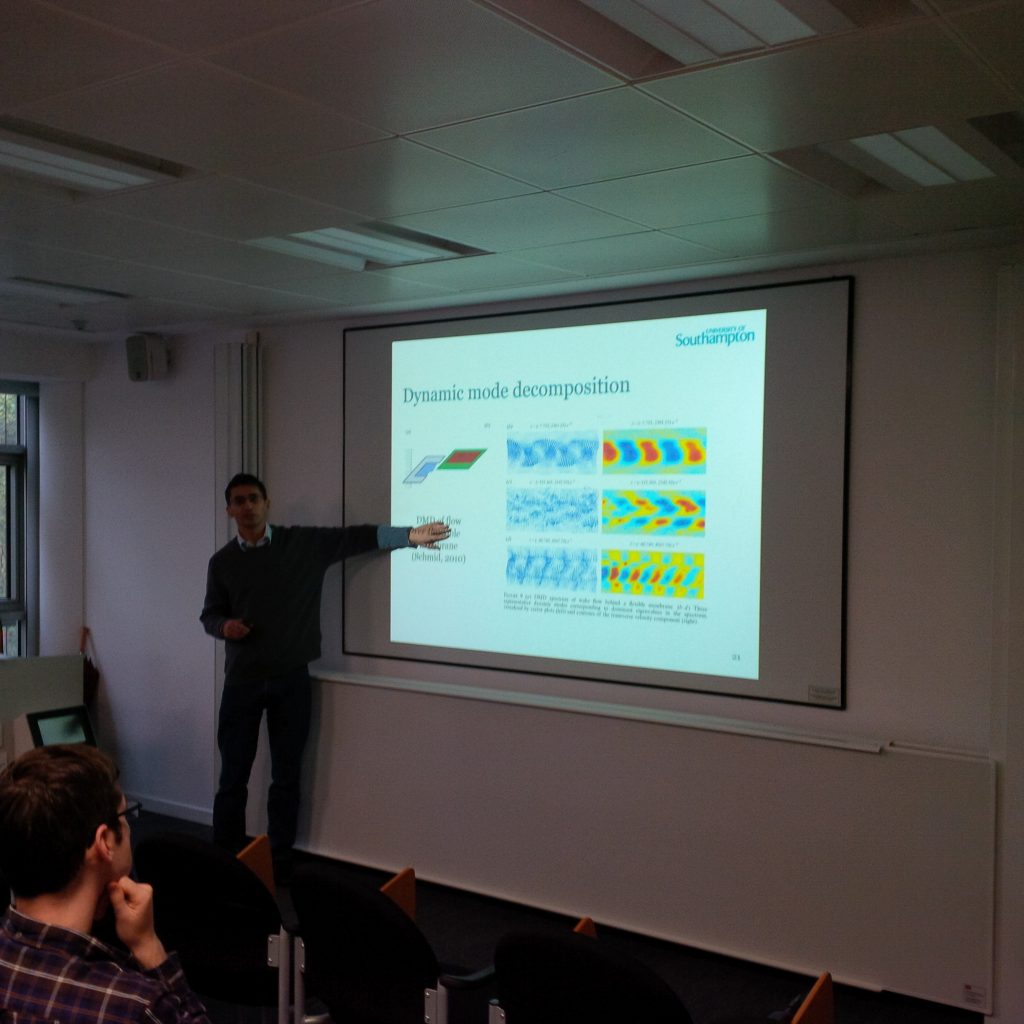Simulation of turbulent fluid flows is one of the oldest areas of computational modelling research. The seminar by Professor Richard Sandberg and Dr. Ati Sharma provided an introduction to modern turbulence simulation methods and associated challenges. The presentation was centered around the discussion of the direct numerical simulation (DNS) of the Navier Stokes equations and methods for analysis and post-processing of the DNS data.
The first part of the presentation was delivered by Prof. Sandberg and concentrated on computational aspects of the DNS. While the DNS is known to provide an accurate representation of the structure of turbulent fluid flows, it is also known to be computationally demanding due to a wide range of length and time scales that turbulent flows possess. This range of scales grows rapidly with the Reynolds number. Thus, until recently, computational power required for the DNS of the vast majority of turbulent flows of practical significance made it infeasible to use the DNS as a design or even as an applied research tool. Prof. Sandberg’s presentation described several approaches for exploitation of the state-of-the-art computer hardware for improvement of the performance of the DNS routines, such as parallelisation of the DNS codes using graphical processing units (GPUs) and hybrid multicore CPU and GPU systems, as well as more traditional multi-core/multi-processor supercomputer systems.

Dr. Ati Sharma presented a discussion of modern modal decomposition and model order reduction algorithms that are often used for analysis of turbulent fluid flow data. Particular attention was given to proper orthogonal decomposition and a more recently developed dynamic mode decomposition. These methods allow for extraction of global linear modes directly from the flow data and do not rely on any priori knowledge about the nature/model of the underlying physical process. Thus, these methods are applicable to the data obtained either from simulation or experiment. The obtained eigenstructure can be used for analysis of the flow physics, design of the flow control algorithms or construction of simplified models of the flow. However, application of these methods to fluid dynamics problems also presents a significant computational challenge due to the size and complexity of typical data sets, as well as a more universal software engineering problem of managing a large amount of simulation data.

Posted by Mihails Milehins
